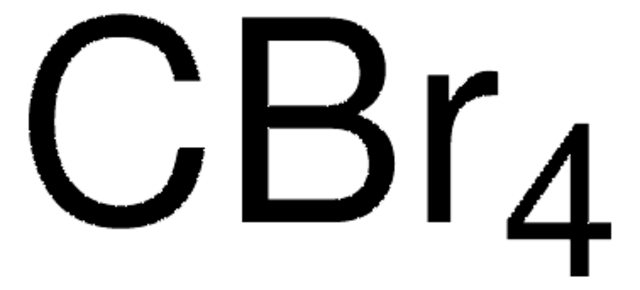93094
Triphenylphosphine, polymer-bound
100-200 mesh, extent of labeling: ~1-1.5 mmol/g Capacity (Phosphor)
Synonyme(s) :
Copolymer of styrene and divinylbenzene, diphenylphosphinated, Diphenylphosphino-polystyrene, Polystyrene crosslinked with divinylbenzene, diphenylphosphinated
About This Item
Produits recommandés
Forme
solid
Niveau de qualité
Capacité de réaction
reaction type: Buchwald-Hartwig Cross Coupling Reaction
reaction type: Heck Reaction
reaction type: Hiyama Coupling
reaction type: Negishi Coupling
reaction type: Sonogashira Coupling
reaction type: Stille Coupling
reaction type: Suzuki-Miyaura Coupling
reaction type: solution phase peptide synthesis
Pertinence de la réaction
reagent type: ligand
Ampleur du marquage
~1-1.5 mmol/g Capacity (Phosphor)
Matrice
crosslinked with 1% DVB
Taille des particules
100-200 mesh
Groupe fonctionnel
phosphine
Température de stockage
2-8°C
Chaîne SMILES
c1ccc(cc1)P(c2ccccc2)c3ccccc3
InChI
1S/C18H15P/c1-4-10-16(11-5-1)19(17-12-6-2-7-13-17)18-14-8-3-9-15-18/h1-15H
Clé InChI
RIOQSEWOXXDEQQ-UHFFFAOYSA-N
Vous recherchez des produits similaires ? Visite Guide de comparaison des produits
Catégories apparentées
Description générale
Application
Code de la classe de stockage
11 - Combustible Solids
Classe de danger pour l'eau (WGK)
WGK 3
Équipement de protection individuelle
dust mask type N95 (US), Eyeshields, Faceshields, Gloves
Faites votre choix parmi les versions les plus récentes :
Déjà en possession de ce produit ?
Retrouvez la documentation relative aux produits que vous avez récemment achetés dans la Bibliothèque de documents.
Notre équipe de scientifiques dispose d'une expérience dans tous les secteurs de la recherche, notamment en sciences de la vie, science des matériaux, synthèse chimique, chromatographie, analyse et dans de nombreux autres domaines..
Contacter notre Service technique








